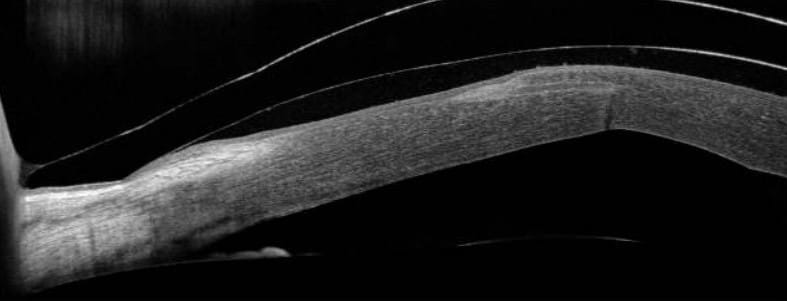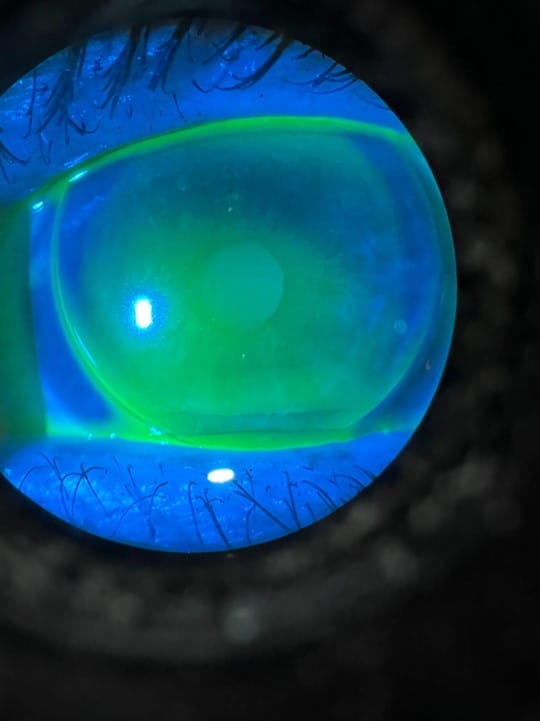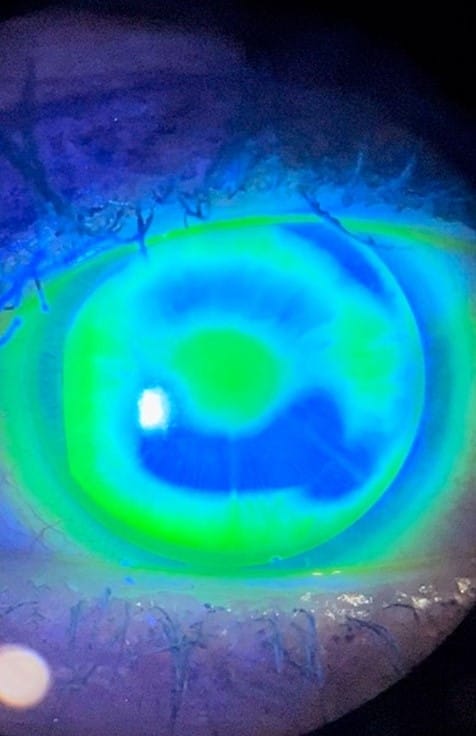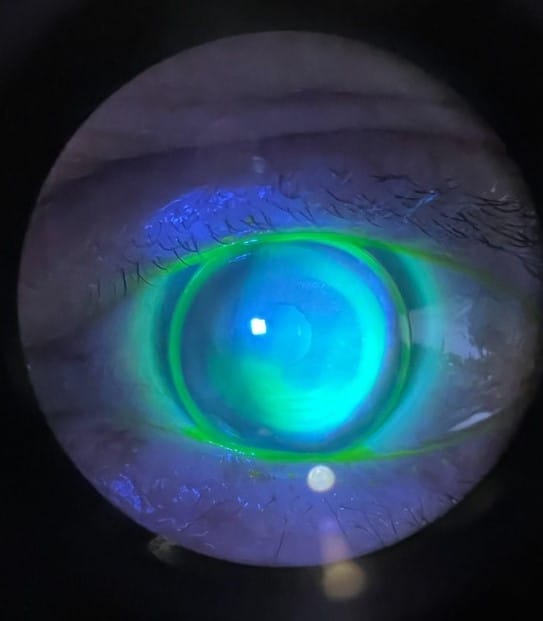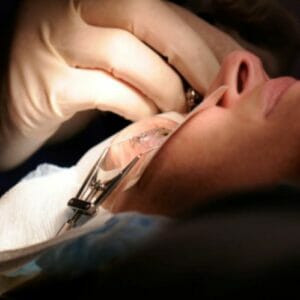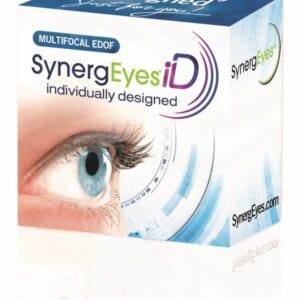July 18, 2023
It is estimated that around 9.5 million people received LASIK by 2018.1 The LASIK boom was about 10 to 20 years ago, and many of the patients undergoing refractive surgery at the time were in their 20s and 30s. Many of these people enjoyed glasses-free vision until recently as they crossed over the presbyopia threshold, and it is a frustrating adjustment to rely on glasses again when they’ve been correction free for so long. Although these patients are unhappy that they need vision correction again, they are often highly motivated to avoid having to wear glasses and are willing to try contacts for the first time since before their surgery or even for the first time ever.
We approach these patients similarly to any contact lens evaluation with plenty of education and management of expectations. We are now dealing with an oblate cornea rather than a prolate one. We explain to the patient prior to the fitting that their eyes are no longer shaped like those untouched by surgery and that typical contacts are manufactured to fit normal eye curvature. This means that a typical soft contact lens might not fit their eyes properly or achieve desirable vision.
In our experience, standard soft lenses just don’t behave predictably on post-refractive oblate corneas. We see strange over-refractions or very unstable toric lenses that drive patients to come back over and over to try different prescriptions and brands. Ultimately, we are just spinning our wheels trying to shove a square peg in a round hole. We’ve learned over time to lower our threshold for trying a specialty lens option if a standard soft contact doesn’t behave predictably on the first try.
Lenses Specifically Designed for Irregular Corneas
We’ve discussed custom soft lenses, rigid gas permeables, hybrids, and sclerals in the articles “Why Specialty Multifocal Contact Lenses Are a Win-Win Solution” and “Custom Soft Multifocal Contact Lenses Often the Optimal Solution for Presbyopes.” Each of these modalities has specific designs for the oblate cornea that are different from what we have discussed in the past.
Custom soft contacts come in several different options. Manufacturers often adjust the fit of their more common toric and multifocal lenses for oblate corneas, so it’s very important to let the consultants know that the patient has had refractive surgery. Alternatively, there are specific designs for post-refractive eyes that have a reverse-geometry design and an increased center thickness to provide better centration, movement, and can mask irregularities with the corneal topography. These options are excellent for highly irregular corneas such as those after Radial Keratotomy (RK) or irregular LASIK flaps that have had multiple revisions, and they often come in multiple thicknesses depending on the severity of the irregularities. Front toric prism ballast optics can also be added to correct for any residual astigmatism not masked by the thick optic zone. In our clinic, we use SpecialEyes Toric Multifocal (SpecialEyes Custom Contacts) or Horizon Toric Multifocal (X-Cel Specialty Contacts) for more straightforward fits.
For more atypical or irregular fits, we will opt for a lens with increased center thickness such as the Flexlens PRS (post-refractive surgery) or Flexlens ARC (atypical refractive correction) by X-Cel. The Flexlens PRS is available in 0.28mm and 0.45mm center thicknesses with spherical correction only. If there’s a significant amount of residual cyl, the ARC lens offers front toric optics in a 0.3mm or 0.5mm center thickness. Both of these lenses have normal thicknesses in the periphery to prevent hypoxia to the limbal stem cells. These options are great because they can be ordered empirically without a fitting set. Similar options on the market that may or may not require a fitting set include, but are not limited to, Kerasoft IC/Thin (ABB Optical, Art Optical) and RevitalEyes (Metro Optics).
Reverse Geometry RGPs and Hybrids
Rigid gas permeables also provide an excellent alternative for post-refractive patients. Many manufacturers offer a reverse geometry design to fit oblate corneas. Fitting these is more challenging than a standard RGP, but the principles are the same — there should be good alignment centrally, mild bearing mid-peripherally outside the surgical treatment zone, and adequate edge lift, centration, and movement. These lenses can be fit empirically by sending a copy of the corneal topographies to a fitting consultant. However, we highly recommend requesting a loaner fit set along with the empirically designed lenses due to the unpredictability of post-refractive corneas to better assess what adjustments need to be made. Most reverse geometry RGPs are only available in a spherical power, so distance-only or monovision is required for these lenses. However, some manufacturers have incorporated multifocal optics in their reverse geometry designs including Art Optical (CLASIKcn), Valley Contax (Lasik Near), and Blanchard Contacts (RSS with Reclaim optics).
Hybrid options are exclusively made by SynergEyes. The company offers two oblate designs: SynergEyes PS (post surgical) and UltraHealth FC (flat curve). The former can be ordered empirically with corneal topographies, but the latter requires a fit set. The SynergEyes PS is inserted and removed like other hybrid lenses. The UltraHealth FC is inserted like a scleral lens by filling the bowl with preservative-free sterile saline, and it is removed like a typical hybrid. They are only offered in spherical prescription, but they offer excellent comfort for patients who don’t adapt well to corneal RGPs.
Most scleral manufacturers offer a reverse geometry or oblate design, and fitting philosophies are identical to other scleral designs. Many come with front toric options or multifocal options, but these optics cannot be combined in the same lens. Sclerals are excellent for highly irregular corneal surfaces and can provide excellent comfort for those who have failed other alternatives.
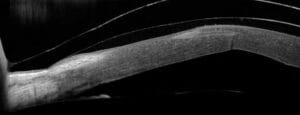
Post-refractive patients can be some of the toughest contact lens fits because of how unpredictable their corneas can be. However, the most difficult fits are often the most rewarding because the patients have often tried and failed elsewhere, so they are especially thrilled when they can achieve glasses-free vision again.
Reference
1 Rabin, Roni Caryn (June 11, 2018). “Lasik’s Risks Are Coming Into Sharper Focus – Some patients who undergo the eye surgery report a variety of side effects. They may persist for years, studies show”. The New York Times


